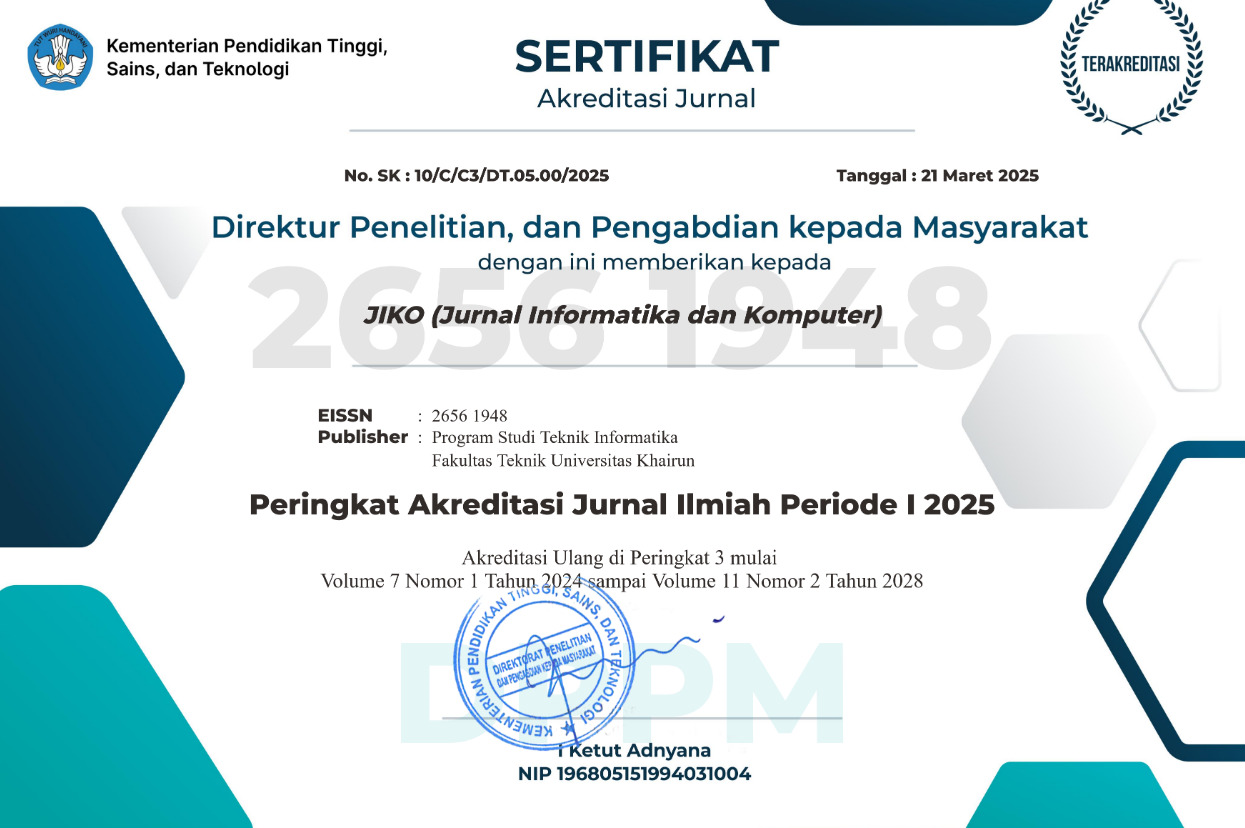EVALUATING MACHINE LEARNING MODELS FOR PREDICTING SLEEP DISORDERS IN A LIFESTYLE AND HEALTH DATA CONTEXT
Abstract
Sleep disorders significantly impact public health, but their detection is often complicated by the multifaceted nature of causative factors. This study investigates the efficacy of various machine learning (ML) models in identifying sleep disorders based on comprehensive lifestyle and health data. We employed a dataset comprising 400 individual records with features including demographic information, sleep metrics, lifestyle factors, and health parameters. The dataset distinguished between individuals with no sleep disorder, insomnia, and sleep apnea. We evaluated a broad spectrum of ML models including logistic regression, decision trees, ensemble methods like RandomForest and GradientBoosting, support vector machines, and neural networks. The models' performances were assessed using accuracy, precision, recall, and F1 score metrics. Results indicated that ensemble methods, particularly RandomForest and XGBClassifier, outperformed other models in terms of accuracy, precision, and F1 scores, achieving values as high as 0.93. These methods proved effective in managing the complexity and variability of the dataset, thereby suggesting their robustness in clinical predictive analytics. The study's findings advocate for the use of advanced ensemble techniques in developing diagnostic tools for sleep disorders, highlighting their potential to enhance predictive accuracy and reliability in real-world healthcare settings. Further research is recommended to optimize these models and explore their integration into clinical practice.
Full Text:
PDFReferences
R. Kobe, Mental Health and Wellbeing. Richmond Kobe, 2023.
L. Chatre, Serenity, Tranquility, Respire, Exercise, Sleep, Self-care. Librinova, 2023.
J. Sorensen, The Art and Science of Lifestyle Medicine: A Practical Guide to Transforming Your Health. eBookIt. com, 2024.
X. Chen et al., “Relationship between sleep duration and sociodemographic characteristics, mental health and chronic diseases in individuals aged from 18 to 85 years old in Guangdong province in China: a population-based cross-sectional study,†BMC Psychiatry, vol. 20, pp. 1–10, 2020.
R. Matsuda et al., “Psychological disturbances and their association with sleep disturbances in patients admitted for cardiovascular diseases,†PLoS One, vol. 16, no. 1, p. e0244484, 2021.
A. Riera-Sampol, M. Bennasar-Veny, P. Tauler, M. Nafr’ia, M. Colom, and A. Aguilo, “Association between depression, lifestyles, sleep quality, and sense of coherence in a population with cardiovascular risk,†Nutrients, vol. 13, no. 2, p. 585, 2021.
V. K. Chattu et al., “Precision medicine meets sleep medicine: how can sleep health aid to reduce the preventable burden of non-communicable diseases?,†Sleep Vigil., vol. 5, no. 2, pp. 179–188, 2021.
R. De Fazio, V. Mattei, B. Al-Naami, M. De Vittorio, and P. Visconti, “Methodologies and wearable devices to monitor biophysical parameters related to sleep dysfunctions: an overview,†Micromachines, vol. 13, no. 8, p. 1335, 2022.
A. A. Seixas et al., “Benefits of community-based approaches in assessing and addressing sleep health and sleep-related cardiovascular disease risk: a precision and personalized population health approach,†Curr. Hypertens. Rep., vol. 22, pp. 1–18, 2020.
N. F. Watson and C. R. Fernandez, “Artificial intelligence and sleep: Advancing sleep medicine,†Sleep Med. Rev., vol. 59, p. 101512, 2021.
J.-L. Pépin, S. Bailly, and R. Tamisier, “Big Data in sleep apnoea: Opportunities and challenges,†Respirology, vol. 25, no. 5, pp. 486–494, 2020.
S. Xu et al., “A review of automated sleep disorder detection,†Comput. Biol. Med., vol. 150, p. 106100, 2022.
B. C. Go and E. R. Thaler, “Home Sleep Testing versus Traditional Polysomnography: Pros and Cons,†Otolaryngol. Clin. North Am., 2023.
G. L. Weinhouse, E. Kimchi, P. Watson, and J. W. Devlin, “Sleep assessment in critically ill adults: established methods and emerging strategies,†Crit. Care Explor., vol. 4, no. 2, p. e0628, 2022.
J. C. Suri, J. C. Suri, and T. M. Suri, “A Review of the Current Status of Home Sleep Apnea Testing vis-à -vis In-lab Polysomnography: Is Old Still Gold?,†Indian J. Sleep Med., vol. 17, no. 4, pp. 99–102, 2023.
M. Chromik, F. Lachner, and A. Butz, “Ml for ux?-an inventory and predictions on the use of machine learning techniques for UX research,†in Proceedings of the 11th Nordic Conference on Human-Computer Interaction: Shaping Experiences, Shaping Society, 2020, pp. 1–11.
V. Hovestadt, O. Ayrault, F. J. Swartling, G. W. Robinson, S. M. Pfister, and P. A. Northcott, “Medulloblastomics revisited: biological and clinical insights from thousands of patients,†Nat. Rev. Cancer, vol. 20, no. 1, pp. 42–56, 2020.
A. Arora, P. Chakraborty, and M. P. S. Bhatia, “Intervention of wearables and smartphones in real time monitoring of sleep and behavioral health: an assessment using adaptive neuro-fuzzy technique,†Arab. J. Sci. Eng., vol. 47, no. 2, pp. 1999–2024, 2022.
B. Zhai, “Towards automated sleep stage assessment using ubiquitous computing technologies,†Newcastle University, 2023.
A. Bhatt et al., “The Emergence of Inpatient Sleep Medicine: Screening for Sleep Disordered Breathing to Reduce the Burden of Cardiovascular Disease,†Curr. Sleep Med. Reports, pp. 1–11, 2024.
G. Thomas, J. A. Bennie, K. De Cocker, and S. J. H. Biddle, “Exploring contemporary screen time in Australian adolescents: A qualitative study,†Heal. Promot. J. Aust., vol. 32, pp. 238–247, 2021.
M. Sharma, H. Lodhi, R. Yadav, H. Elphick, and U. R. Acharya, “Computerized detection of cyclic alternating patterns of sleep: A new paradigm, future scope and challenges,†Comput. Methods Programs Biomed., p. 107471, 2023.
J. Streatfeild, J. Smith, D. Mansfield, L. Pezzullo, and D. Hillman, “The social and economic cost of sleep disorders,†Sleep, vol. 44, no. 11, p. zsab132, 2021.
P. Huyett and N. Bhattacharyya, “Incremental health care utilization and expenditures for sleep disorders in the United States,†J. Clin. Sleep Med., vol. 17, no. 10, pp. 1981–1986, 2021.
S. Giménez, M. Altuna, E. Blessing, R. M. Osorio, and J. Fortea, “Sleep disorders in adults with Down syndrome,†J. Clin. Med., vol. 10, no. 14, p. 3012, 2021.
U. of Michigan, “Sleep Health and Lifestyle Dataset.†2023.
DOI: https://doi.org/10.33387/jiko.v7i1.7870
Refbacks
- There are currently no refbacks.











